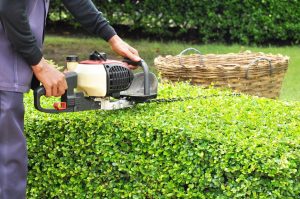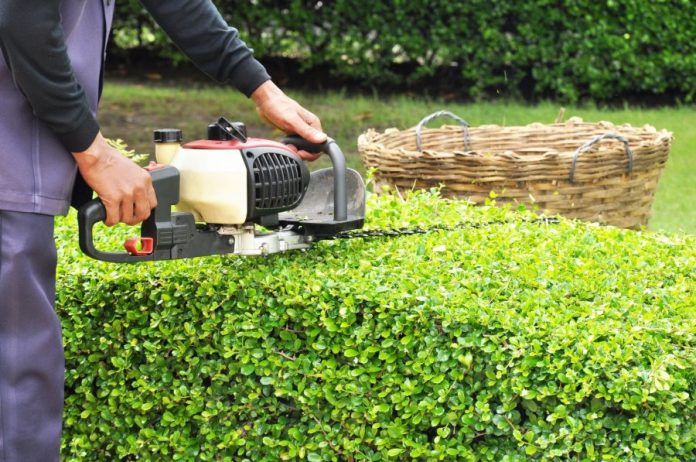 What pruned shrub look captures your imagination?
What pruned shrub look captures your imagination?
Do you like prim and proper military haircuts or scruffy rock-star dos?
Landscape pros refer to the two main shrub pruning categories– formal and informal, or tailored and natural.
When, how and what to cut and trim depends on your goal. Too often do-it-yourself homeowners make the mistake of giving little forethought to their landscape goal.
Dense shrubs work best for severe growth-control.
Last month I mentioned Boxwoods for low or shaped hedges. The type of shearing used is called “heading back.” This technique is similar to a haircut. It “neatens-up” the plant or plants by pinching off the buds on the growing branch tips. Frequent, mild trimming of this nature keeps the shaped plant(s) good looking all the time.
Natural shaping of shrubs is accomplished by “thinning.” This means cutting out whole branches all the way to where they emerge from the main shrub-trunk. Planning the shape before you cut will pay dividends in the form of few regrets later.
Remove a branch, then stand back– like a painter– and have a look before you move on. It’s better to err on the side of caution, because once a branch is gone, you’re stuck with the result.
Dormant branch buds accompany their thinned-out parent and the plant reallocates the energy the whole lot would have used. This usually results– long-term– in a larger shrub.
Shrubs and hedges that bloom in the early spring, like azaleas, do so on OLD wood.
Generally, landscapers tend to let spring bloomers grow in natural shapes. If you must thin the shrub, do the deed a couple of weeks AFTER flowering ends; and, remember, you’re loping off some of next year’s flowers.
On the other hand, blueberries and blackberries make flowers and fruit on NEW wood. The preferred time to prune is in winter or early spring before the shrub breaks dormancy. Without leaves it is easy to identify the old wood and removing it encourages new stem growth– and new blooms.
There are 5 basic pruning tools:
(1) Hand shears look like industrial strength scissors with arched blades shaped like a parrot’s beak. Keep them sharp, dry, oiled and disinfected, to stop the spread of diseases between branches and plants. Many a dirty set of shears has transported the rose rosette virus from an infected to a healthy plant. Careful gardeners use disinfecting wipes on their blades between use on different plants.
(2) Hedge trimmers require the use of both hands. The blades are straight and about 12-inches long. That curious notch in the base of the blades is to help cut thicker branches. Use these to head back new growth on formal/tailored shrubs and hedges.
(3) For the gadget-minded, electric shears/trimmers come in plug-in and cordless models, with rechargeable batteries. The latter have a power time-limit per work session.
(4) Lopers are long-handled shears with those parrot beak blades and are for pruning mature shrubbery branches around 1.5-inches in diameter. This tool cuts cleaner than a saw.
(5) The pruning saw is devoted to branches with diameters greater than 1.5-inches. It has a narrow, curved blade with special teeth that do not bind in green wood. For an easier job, PULL the pruning saw blade, rather than pushing and pulling it.







.jpg)







